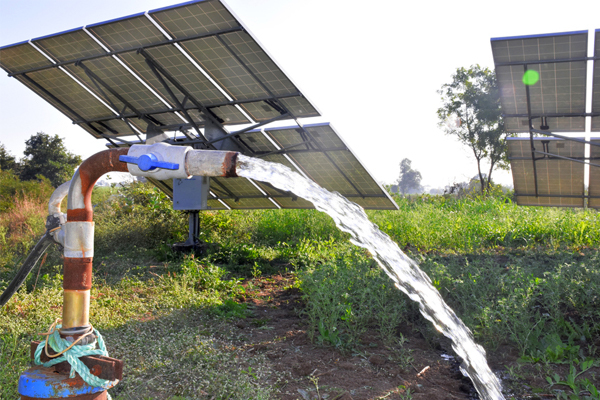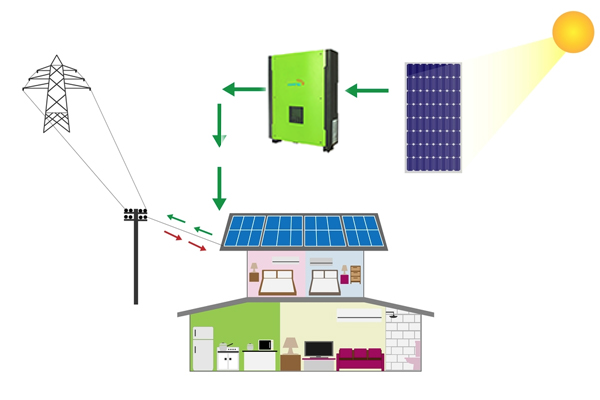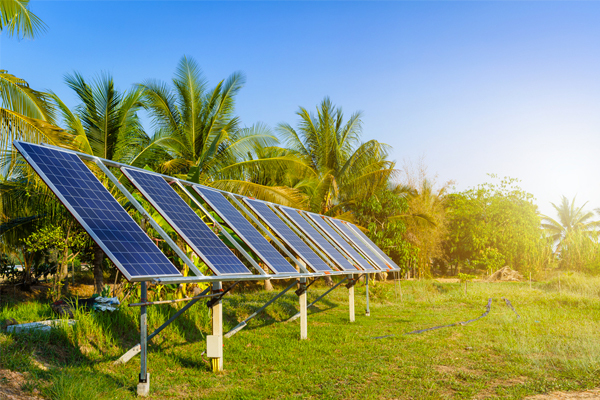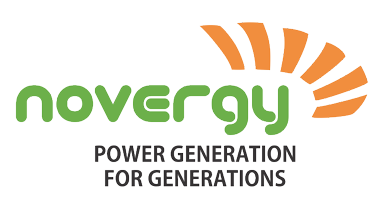A bigger pie of many economies worldwide depends on agriculture and the income generated through it. To function effectively, they need an uninterrupted supply of water and electricity. Besides, the decline in the table of groundwater is also becoming a worrisome issue for agriculturists, businesses and farmers globally.
For several decades in rural/remote areas, the supply of electrical energy for agriculture was extremely volatile and most farmers could only access it at night. Owing to the prevalent outages and erratic supply, the water supply was not ample to accommodate the irrigation requirements. With that, farmers and agribusinesses were faced with zillions of problems – as they could not run equipment, machinery and store the produce on-premise. It harshly hampered their cultivation and harvesting process.
Further, the rates of energy kept increasing constantly, affecting the overall profitability margins of the farmers by raising the costs of operations and overheads. If we leave these issues unresolved, then they can wreak havoc on the daily operations, food security and its supply chain.
This is why solar agriculture technologies have forayed into the market. It helps agribusinesses thrive by providing them all the means to run their daily operations, by streamlining the processes they follow and by offering aid to marginalized farmers.
Do you know that of all the energy and fuel consumption in India, about 20% of electricity and 13% of fuel goes into irrigation? With solar installations, these consumption rates will be minimized by half (i.e.225 million litres a year).
It removes farmers and businesses’ dependence on monsoon by providing them with stand-alone systems. Investors should also consider the long-term benefits attached to it. The operating costs of a solar pump are almost zero, it can draw water with minimal overheads for at least 25 years.
Across the globe, solar energy is laying the foundation for a sustainable tomorrow. The cut-throat competition, government subsidies and demand for clean energy has accelerated its adoption rates amongst homeowners, industrialists, business owners and agriculturists as well.
Irrespective of the size of your farmland, you can reap a multitude of commercial advantages by migrating to solar power. The significant decrease in utility costs is one of the major motivations for installing solar panels in the farms, vineyards and agricultural industries. Not just that, you can also safeguard your farm from the rising costs of electricity for more than two decades.
The Indian authorities have also set a milestone to make power supply accessible for farming in the daytime as well. To furnish that prerequisite, Agri solar power plants and solar water pumps (SWP) are being installed at a rapid rate.
Let’s walk you through the most evident benefits and use cases of deploying solar-powered systems in agriculture;
Boosts water security with solar water pumps (SWP)
Did you know that around 10 million water pumps used by farmers in India are powered by diesel? Given the fuel rates that are perpetually rising every year and its exhaustive nature – agricultural industries everywhere are bearing the brunt. They do not even attain the break-even point and can call their business profitable.
Substituting fleets of DG sets with solar pumping systems in agriculture would significantly decrease emissions into the atmosphere and add value to the administration’s initiatives to enhance the self-sufficient farming industry by cutting down the usage of expensive and imported fuels.

The solarization of such pumps could also significantly curtail their reliance on traditional sources of energy provided by the DG sets and local grids, and therefore minimize their subsidy burden on agricultural power usage.
Further, it is a known fact that groundwater management is the need of the hour, as to irrigate the cultivable land, farmers need a consistent supply of water. Owing to disrupted rainfall patterns, the crops and the annual yield are drastically reduced and severely affected. Solar pumps can also alleviate the costs of heavily subsidized electrical power to the agriculture industry. This might even contribute to tariff cuts for commercial or industrial end-users that cross-subsidize power for agriculture.
Solar installation in energy-intensive facilities such as cold storage and warehouses
Oftentimes, the producers with enormous farmland need warehouses or cold storage facilities to procure their produce – such as grains, vegetables, dairy and more. This requires them to refrigerate the produce for prolonged periods to extend their shelf life. Refrigeration needs a great deal of electricity that solar installation can easily accommodate, by removing the dependence of farmers on local utility grids that can cost them 2-3X more than solar.
They can get the panels with the latest technologies installed, to generate on-premise electricity. The twin-peak/twin-cell technology can produce more energy yield with fewer panels. They can power all the energy-intensive storage and warehouses facilities.
Solar can become a viable revenue generator for farmers via net metering
Agricultural lands have massive surface areas that can be used to employ high-yielding solar panels. In open fields, the solar output can be higher than rooftop installations, as there will be less shading and poor orientation incidents. Farmers can generate an ample amount of electricity and transfer the surplus power to the local grids/DISCOMs to make money from it.

Independent stand-alone systems for remote locations.
To get electricity in remote locations and hilly areas, farmers often need to pay a hefty sum of money for a dedicated power meter, grid, connection fee, wiring and installation. This is why switching to off-grid solar power installation is a smarter choice to power water pumps, irrigation, farming equipment and machinery as they have higher power loads.
Agro-photovoltaics (APV)
Photovoltaics and shade-tolerant crops can co-exist without harming the yield of each other. Global Research illustrated that APV positively influences the yield of crops such as legumes, multiple varieties of fruits and vegetables. It mitigates the plant drought and excessive heat stress by the installations. It also facilitates farmers with feasible temperatures to work from dawn to dusk, increases the energy output and ensures greater pollinator habitats.

A lot of marginal and small farmers can benefit from the ACV. It could present them with the best of both worlds – they can produce electricity while also cultivating high-value crops (HCV) like fruits and vegetables.
To improve the value of the property
In case you sell your farming land with the installation of a functional solar panel system, its valuation is only going to increase. As they are backed with a 25-year long warranty, and they could even obtain a green-building/eco-friendly building certification.
Way Forward with Novergy
With more than 14 years of rich industry experience, Novergy is committed to manufacturing highly efficient solar pumping systems. These systems can considerably boost water output with greater efficiency in remote locations and areas that are saddled with erratic grid supply and unpredictable outages.
We deliver a range of robust pumps including Monobloc Surface, Submersible bore well, submersible open well pumps. These pumps come in a variety of power ratings ranging from 1HP to 100HP, or can also be tailored to the demands of the farms in AC and DC models. The above solar pumps could be utilized for diverse applications, including irrigation, pumping water for agriculture, drinking water, community water supply and so forth.

These pumps ensure exceptional longevity with their stainless steel construct. They have followed stringent quality standards to ensure maximum efficiency. Their benefits include;
- Smart and automatic systems to sustain long hours of farming operations.
- They have high-efficiency motors that require less energy compared to conventional motors.
- Smart detector to identify under-voltage, over-voltage and short-circuit situations.
- Dry running sensors.
- Battery-less operation.
- Supports MPPT and provides a consistent source of water to farmers.
It can be deployed for agriculture/irrigation purposes, desert water supply, village/town water supply, aeration machines, industries, hotels and community hospitals.

We are an end-to-end supplier and manufacture a wide array of solar solutions designed for all kinds of residential, commercial and industrial needs. To check our entire range of solar panels and solar products, visit Novergy!
If this blog has captured your attention in investment in solar, then write to us at enquiry@novergy.net for hassle-free migration to solar.

